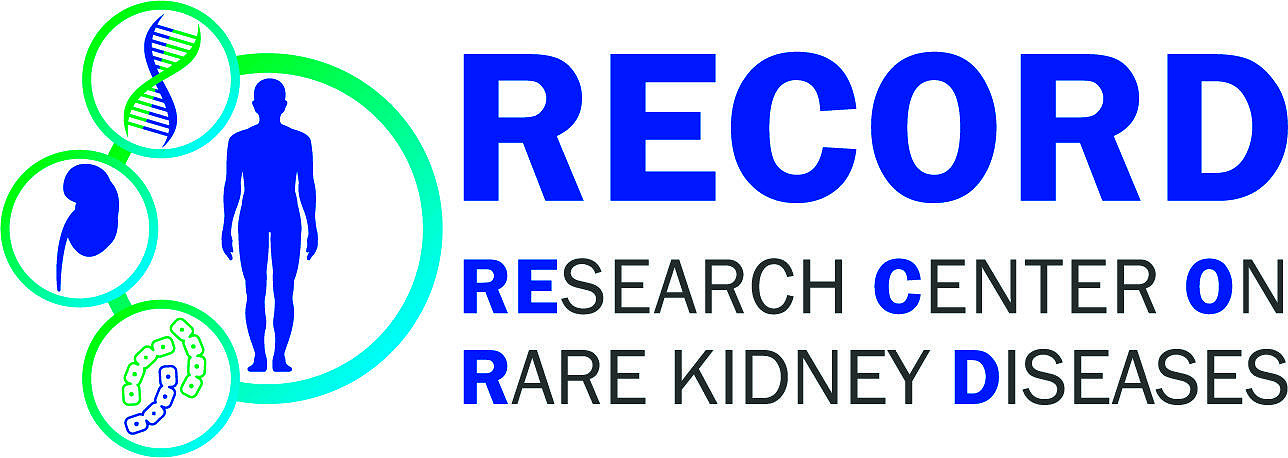 Single cell-based transcriptional profiling of primary and primary recurring FSGS biopsies
Single cell-based transcriptional profiling of primary and primary recurring FSGS biopsies
Wissenschaftliches Arbeitsprogramm (Abstract)
Focal segmental glomerulosclerosis (FSGS) represents a major glomerular cause of end stage renal disease. The definition of FSGS is derived from its histopathological description of the focal appearance (in some but not all glomeruli) of segmental glomerulosclerosis (scars in parts of a glomerulus). Since the FSGS-lesions represent a pattern of response to injury after an initial insult and subsequent loss of podocytes regardless of the underlying etiology, it was recently proposed to group FSGS into primary (immune-mediated) FSGS, adaptive FSGS (nephron overload due to body size increase, reduced nephron number or glomerular hyperfiltration), toxic-/medication, virus- associated FSGS, FSGS caused by pregnancyrelated VEGF-inhibition and genetic FSGS (Koop et al., 2020, Uffing et al., 2020).
Primary FSGS (pFSGS) is characterized by circulating immune factor (s), responsiveness to immunosuppressive therapy (albeit highly variable) and a high risk of relatively early and often devastating recurrence after kidney transplantation (Ponticelli, 2010, Francis et al., 2016, Sethi et al., 2015, Alasfar et al., 2018, Uffing et al., 2020). In pFSGS, global foot process effacement accompanied with glomerular scaring usually leads to nephrotic-range proteinuria (Hommos et al., 2017).
In contrast, secondary and genetic forms of FSGS neither respond to immunosuppressive therapy nor recur after kidney transplantation. Secondary and genetic forms of FSGS often present a segmental foot process effacement and without nephrotic syndrome (De Vriese et al. 2018, Sethi et al. 2014). Despite considerable scientific efforts, the causative permeability factor(s) of primary FSGS as well as its / their origin remain elusive. The success of identifying the immune mediators fundamentally depends on the selection of highly informative patient cohorts. Previous discoveries to identify immune mediators may have been hampered by the poor clinical stratification of FSGS entities, incomplete understanding of (the early) podocyte signaling pathways and the eventually complex and low abundant nature of the predicted circulating immune factors. Decoding podocyte signaling pathways in response to immune interactions will offer unprecedented opportunities to precisely stratify, target or prevent primary and recurring FSGS.
One approach to a better understanding of the morphological response of podocytes in primary and recurrent FSGS is the investigation of the molecular programs driving these changes. Single cell RNA-sequencing allows us to analyse the expression of thousands of genes in thousands of individual cells (Malone et al., 2018). Recent publications could show that single cell RNA-sequencing in murine and human kidney samples enables a molecular characterization of this complex heterogenous tissue including infiltrating and resident immune cells (Park et al., Science 2018, Wu et al., JASN 2018, Kramann et al., Nature 2021) .
In this study we aim to define the single cell-based transcriptomic landscape of kidney biopsies taken from patient cohorts of primary FSGS and rapidly recurring (within 48h) primary FSGS after transplantation to receive new insight into the early molecular disease pathways of pFSGS in epithelial and endothelial cells.
To achieve this goal the following strategy will be employed:
- Development of a robust single cell/nuclei dissociation protocol of cryopreserved kidney biopsies for the emerging Hamburg and European Renal Omics (HERO) biobank.
The HERO biobank will provide the opportunity for the collection of kidney biopsies even from rare kidney diseases like FSGS through its multiple collaboration partners. The obtained kidney biopsies will be stored in a cryopreservation solution at – 80 °C. A cryopreservation solution is indispensable for optimal shipment and storage conditions of the valuable kidney biopsies to prevent tissue and biomolecule degradation but often impedes tissue dissociation techniques by leading to varying extends of tissue fixation.
In this study I will develop a single cell and single nuclei protocol for kidney biopsies stored in a (stabilizing) cryopreservation solution. Further, I will examine the suitability of commercially-available (RNA stabilizing) cryopreservation media for tissue dissociation and further possible analyzing techniques (i.e. immunofluorescent imaging). - Comparison of the single cell and the single nucleus sequencing protocol with two different droplet-based high throughput single cell platforms. I will perform single cell and single nucleus RNA-sequencing of cryopreserved kidney biopsies with two commercially-available high throughput single cell systems (Chromium, 10X Genomics and ICELL8, Takara Bio) to examine library efficiency in terms of capture rate, cell-assignable reads and mRNA detection sensitivity. Especially the capture rate, or the fraction of cells recovered in the data relative to input as well as the bias produced by the tissue dissociating protocol is critical for the detection of rare (immune) cells.
- Analysis of transcriptional changes in renal epithelial, endothelial and immune cells from pFSGS patients.
After I. and II., I will perform single cell or single nuclei RNA-sequencing of kidney biopsies taken from patients with primary and rapidly recurring primary FSGS. Transcriptome profiles from kidney biopsies of both cohorts will be compared with each other and with already existing single cell transcriptome datasets from tumor nephrectomies. The detection of transcriptional changes induced by the proposed circulating factors signaling pathways in epithelial and endothelial cells of patients with early recurring primary FSGS as well as the profile of renal immune cells will directly point towards potential candidate factors and contribute to the discovery of a target directed therapy in patients with primary and recurrent FSGS.
